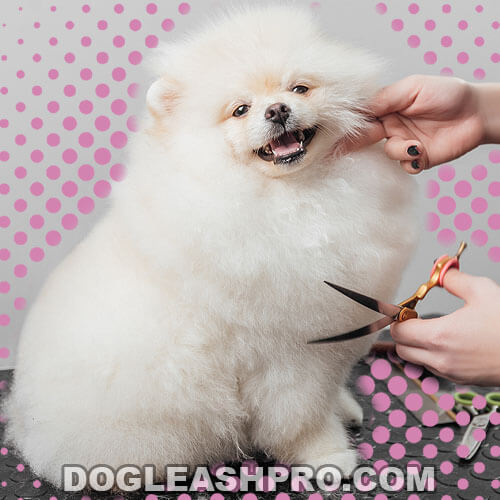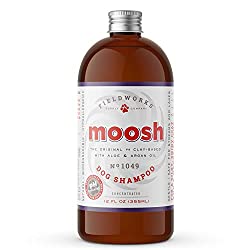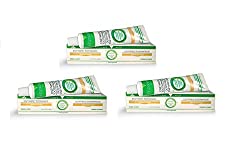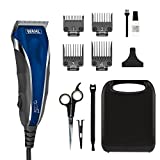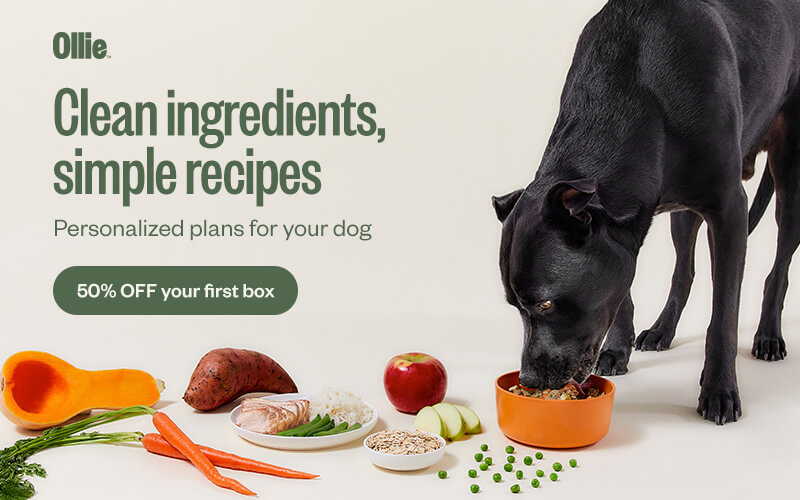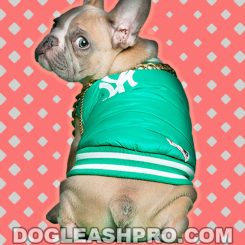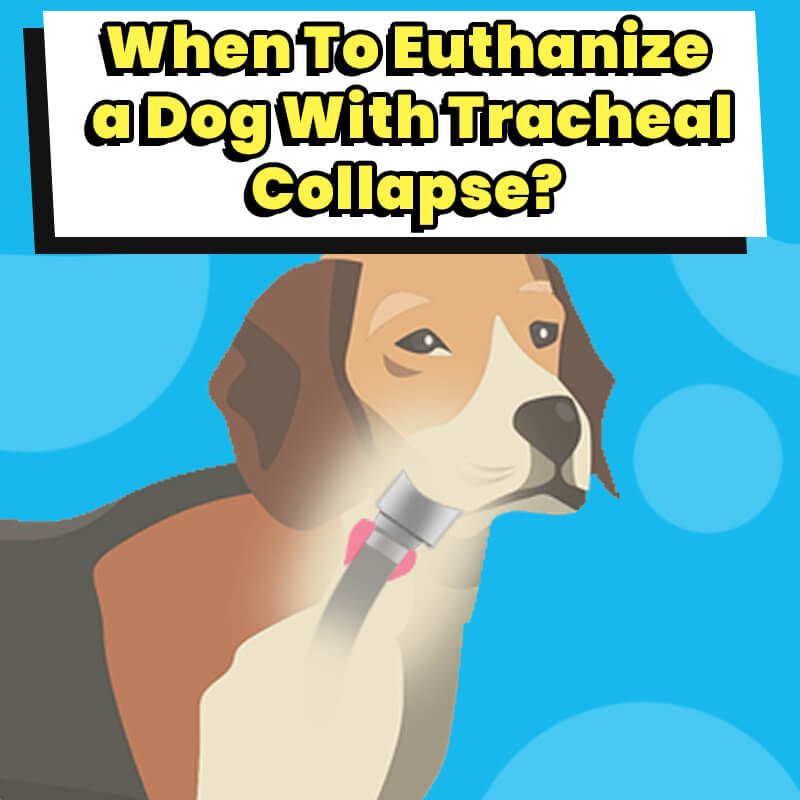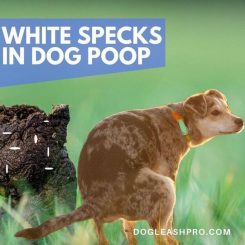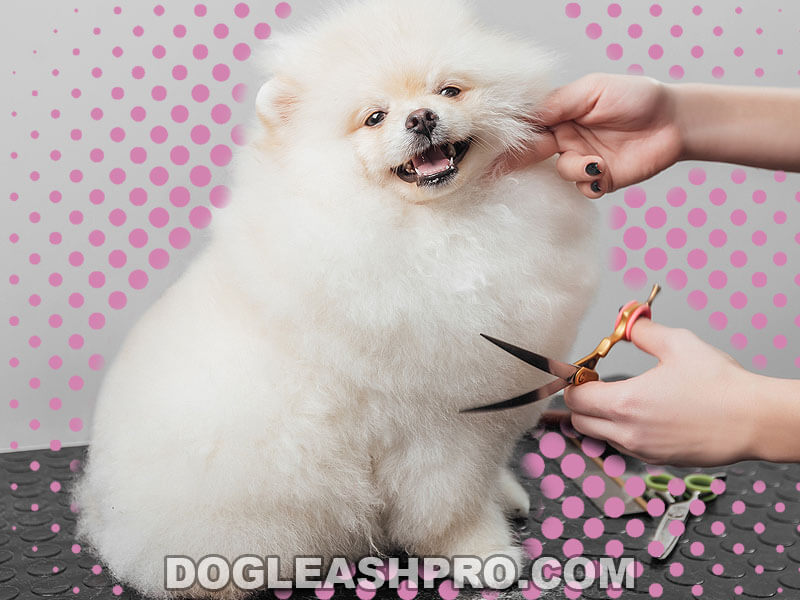
Why is my Dog Scooting After Grooming? There can be several reasons behind your dog scooting after grooming. The most common causes for dogs dragging their bottoms on the ground include nicks, cuts, anal sac purging, clogged glands, or irritation from grooming products. Itchiness, infections, or mental trauma are also known factors.
Dog scooting after grooming is a common phenomenon that pet owners can face. It’s when a dog drags its bottom on the ground, often immediately after being groomed.
This behavior may be alarming for owners concerned for their furry friend’s well-being. Thankfully, dog parents can tackle this problem at home most of the time.
This article will explore all aspects of Dog Scooting After Grooming, including helpful Home Remedies For Dog Scooting. All you need to do is stick with us as we break down the science behind dog scooting after a trip to the groomer. So, grab a comfy seat and read on!
Table of Contents
What is Dog Scooting?
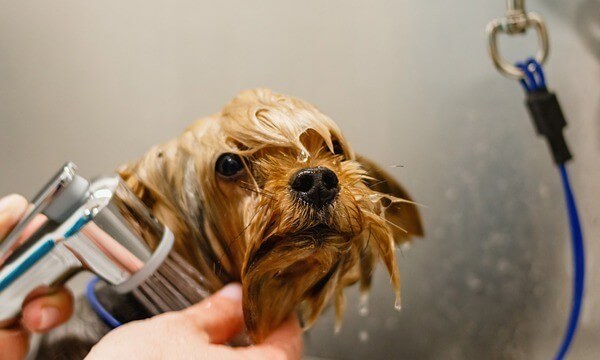
Dog scooting is common among dogs and involves dragging their bottom along the ground. A variety of reasons can cause this behavior.
While the occasional scoot may not be a cause for concern, frequent or excessive scooting can indicate an underlying issue requiring veterinary assistance.
If you’re a concerned dog parent whose canine has taken to scooting lately, here’s a list of the most common culprits behind such behavior. Review each reasons below and correlate it to your doggo’s actions to see if you can establish a plausible link.
Parasites
Intestinal worms, such as tapeworms and roundworms, can irritate a dog’s digestive tract, leading to discomfort around the anus. Moreover, your pet can easily pick up such an infestation if it ingests larvae or eggs.
RECOMMENDED: Is Chicken Poop Bad For Dogs?
Parasites like roundworms are commonly found in dirt, and if your doggo licks or eats something contaminated, the parasites find an easy way in. On the other hand, hookworm larvae burrow into the skin of pets and hatch once they reach the intestines.
Once infected, your dog can show worm infestation symptoms such as vomiting, weight loss, or a bloated belly.
But, one sure-shot sign of intestinal parasites is also scooting. If you think your canine is suffering from an infestation, you’ll need to take a trip to the vet to run tests.
Once the infestation type is confirmed (via stool or blood tests), the vet will prescribe your furry friend the necessary medications.
Anal Gland Problems
If you’re new to the world of puppy parenting, you might be surprised to learn your canine has two small anal glands (or sacs) on either side of its rectum.
These glands contain a foul-smelling liquid that releases when dogs poop. Experts state the fluid is a canine’s way of marking its territory.
If, for some reason, the anal glands of a pup become impacted, this can cause discomfort and itchiness around your pet’s bum. Your pooch will then scoot to relieve itself.
Generally, impaction of the anal glands requires a quick trip to the vet for drainage. The procedure is intrusive but relatively painless and is over quickly.
Diarrhea
Diarrhea can cause irritation and inflammation around the dog’s bum, leading to scooting. It’s a common condition among dogs and can be caused by various factors, such as viral or bacterial infections, dietary changes, or stress.
The most apparent symptom of diarrhea is loose stools. Other indications include nausea, vomiting, and lethargy.
While diarrhea isn’t always a cause for anxiety, it can be dangerous for puppies and toy dog breeds because they lose fluids faster than larger pets.
That’s why taking them to the vet for appropriate medications or IV hydration can be necessary.
READ ALSO: Puppy Has Diarrhea But Still Playful
Wounds
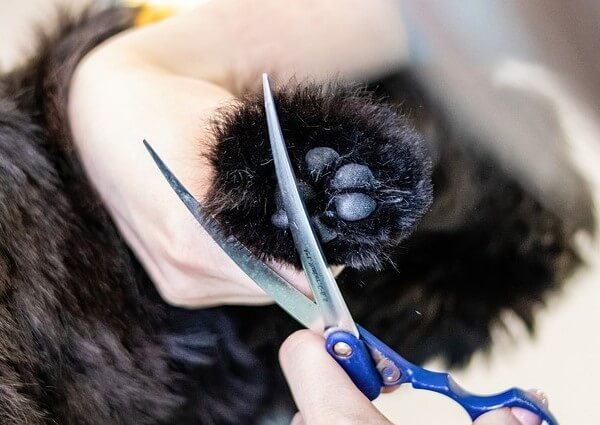
Injuries or wounds around the dog’s rectum can cause pain and discomfort, leading to scooting. Canines may injure themselves while playing, running, or fighting with other dogs.
Injuries themselves can cause your furry best friend irritation around the bum, or they can become inflamed or infected, in which case, you’ll notice your pup trying to lick the area constantly. Besides that, the infected or inflamed skin might appear red or bloated.
FUN FACT: Bactine is a medication that is often used to treat small cuts, burns, and scrapes. So if you have Bactine at home, can you safely use Bactine on your dog’s scrapes, cuts, or hot spots? Check out Can You Use Bactine On Dogs? to find out!
What does dog grooming include?
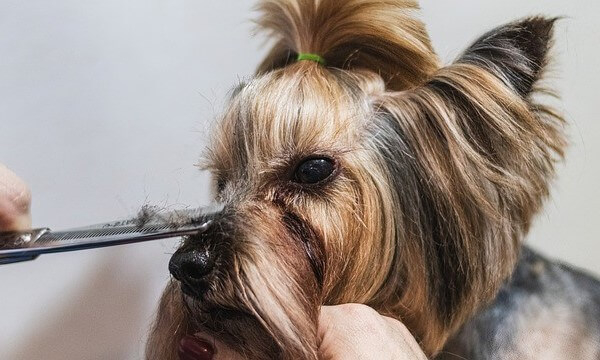
Put simply; dog grooming involves maintaining the hygiene and appearance of dogs. It also includes various activities that help keep your fur baby feeling their best.
Some pet parents prefer grooming their pets, while others are comfortable letting a professional canine groomer work on their dog. For readers planning to bring home their first pup, here is a quick breakdown of some of those actions.
You can also learn more in this article: Dog Grooming For Beginners At Home: Dos and Don’ts.
Brushing
Regular brushing is an essential part of dog grooming. It helps remove loose fur, dirt, and debris from your dog’s coat. It also distributes natural oils across the coat, keeping it shiny and healthy.
Brushing frequency depends on the breed and coat type, but most dogs require brushing at least twice to thrice a week.
Haircuts
Some dog breeds require regular haircuts to maintain their coat’s shape and prevent matting or tangling. However, not all dogs need haircuts, so it’s essential to consult with a professional groomer for advice.
Bathing
Bathing helps keep your dog’s skin and coat clean and free from pests. However, over-bathing can strip your dog’s coat of natural oils, leading to dryness and irritation. Most dogs need a bath every three to four months, but some breeds require frequent washes.
When you do clean your K9 friends, be sure to use dog-friendly shampoo that contains organic ingredients and is sulfate-free and preservative-free.
Nail Trimming
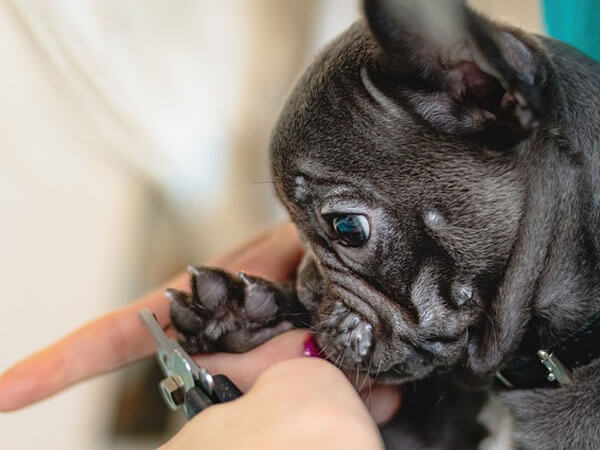
Dogs’ nails grow continuously. If left untrimmed, nails (or claws) can grow too long and cause discomfort, health problems, or even cause injuries.
Frequent nail trimming helps prevent such issues. Most dogs need their nails trimmed every four to six weeks.
If your pooch is sensitive to the nail clipping sound, try using a dog nail grinder because it is whisper-quiet and features a precision diamond drum bit grinder. Most dogs fall asleep during their nail trimming sessions when their owners use a nail grinder.
Ear Cleaning
Cleaning your dog’s ears is essential to prevent infections and irritation. Dogs with floppy ears are likelier to develop ear problems, making regular cleaning even more crucial. Most doggos require ear cleaning once a week.
READ NEXT: Can You Use Baby Wipes On Dogs?
Oral Care
Maintaining your dog’s dental health is crucial to their overall well-being. Regular teeth cleaning helps prevent gum disease, decay, and bad breath. You can clean your dog’s teeth using a toothbrush and toothpaste designed specifically for dogs.
Can a dog be traumatized after grooming?
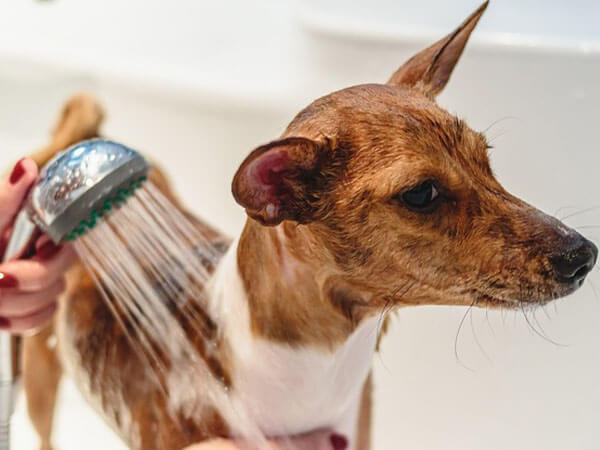
Grooming is an integral part of a doggo’s hygiene routine. However, some dogs may show signs of fear and anxiety during grooming, which can lead to trauma.
Trauma is undergoing a disturbing experience, and ‘traumatized’ dogs are often canines who’ve had a bad time at the groomer.
The ‘dog traumatized after grooming’ phenomenon can be due to various reasons.
One of the main reasons for a dog in pain after grooming may be the use of forceful techniques, such as pulling and yanking, which can cause pain and discomfort to the dog.
Another reason can be grooming equipment, such as clippers and scissors, which can be frightening to the dog, especially if they are not used to the noise and vibration.
Additionally, dogs can be traumatized by the grooming environment. Some dogs may feel uneasy in unfamiliar places, such as grooming salons, and the presence of other animals can also cause stress and anxiety. This is particularly true for fur babies who have not been socialized.
Choosing a reputable groomer who is experienced and gentle with dogs is essential. Groomers should use positive reinforcement techniques and take breaks if the dog shows signs of stress.
Owners can also help reduce the stress of going to a professional groomer in various ways. If your Google search includes the term my dog is traumatized after grooming, here are some tips to help make grooming a better experience for your pet.
- Getting your pup used to clippers or nail trimmers from a young age will reduce the chances of your fur baby acting out at the groomer.
- Not all dogs like bathing. It’s best to acclimate your four-legged friends to baths before handing them over to a groomer.
- Speak to the groomer before you book an appointment, or better yet, visit the establishment and check their handiwork. Find another option if the groomer isn’t careful with the animals.
- Try to take your canine to the groomer of your choice once or twice before the appointment to get your furry friend used to the surroundings.
- Speak with your vet about CBD relaxants and if they’re a good option to keep your pet calm during its grooming session.
Do dogs feel better after grooming?
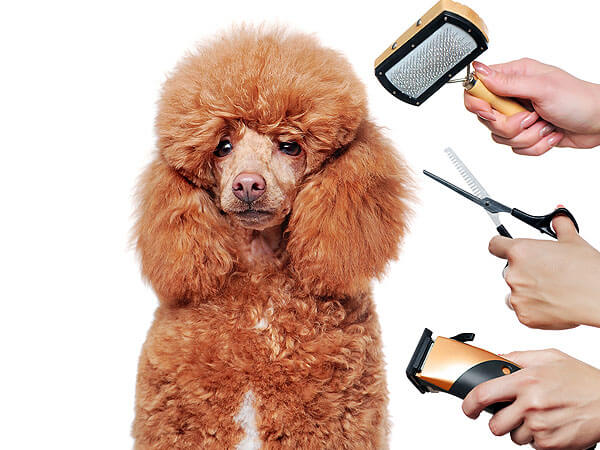
Grooming isn’t always disturbing for dogs. In fact, there are several reasons why grooming routines are necessary and can help your canine feel better.
For one, grooming helps keep your pet’s coat clean and free of tangles, knots, and other issues that can lead to skin problems. Grooming can also be a calming and relaxing experience for dogs, and some fur babies enjoy the pampering that comes with it.
One of the main reasons dogs feel better after grooming is that it helps to remove excess fur. When a dog’s coat becomes matted, it can be uncomfortable or even painful.
Grooming helps to remove any excess fur, which can help to prevent tangles in the future. It also helps increase ventilation and makes moving your pet easier.
Grooming practices, like regular brushing, help remove dirt and debris from a dog’s coat. This can help prevent skin irritation and itching, a common dog problem. When a dog’s coat is clean and healthy, they are likely to feel comfortable and happy.
Another benefit of grooming is that it can help reduce the risk of skin infections. When a dog’s coat is dirty, it can be a breeding ground for bacteria and parasites like ticks and fleas. That’s why grooming helps to remove any potential sources of infection.
In addition to the physical benefits of grooming, canines can also experience emotional benefits.
Grooming can be a bonding experience between a dog and its owner and help strengthen their relationship. Fur babies often enjoy the attention that comes with grooming, which can reduce stress and anxiety in some dogs.
In conclusion, grooming is crucial to a dog’s overall caretaking regimen and provides numerous physical and emotional benefits.
Why do Dogs Scoot After Grooming?
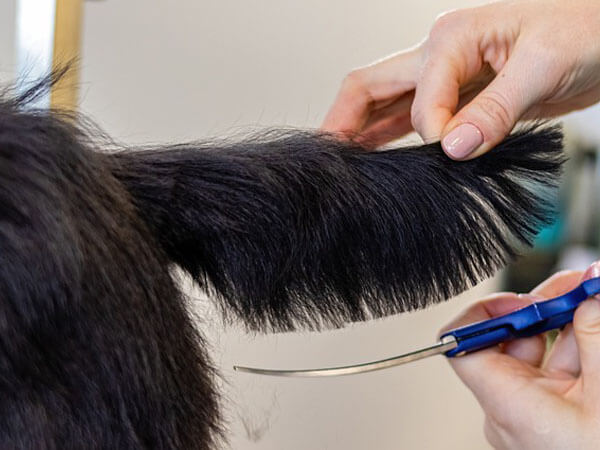
Believe it or not, terms like ‘after grooming dog scooting’ and ‘dog scooting bottom after grooming’ are pretty popular on the internet. Why is that?
That’s simple.
Grooming, or the after-effects of grooming, can cause your fur baby pain or irritation, resulting in the old dragging dance.
If you’re here specifically to have all your ‘dog is scooting after grooming’ queries answered, you’re in the right place!
Scroll below to learn all the reasons why canines can drag their bottoms on the floor after a grooming session.
Draining Anal Sacs
The words ‘draining anal sacs’ may sound uncomfortable, but if done by an experienced professional, the process is pretty bearable (for your dog) and straightforward.
As mentioned earlier, canines have two small anal glands around their rear filled with stinky liquid.
If this liquid doesn’t exit the body upon excretion (pooping), it can become painful for your doggo.
DON’T MISS: How Many Times A Day Should A Puppy Poop?
So, when your fur baby goes for its regular grooming appointment, you can expect an experienced groomer to check the anal glands and drain them by pressing or squeezing them if required.
Most doggos withstand this simple draining procedure without experiencing too much pain. However, emptying of the anal glands can sometimes cause discomfort or irritation, no matter how deftly handled.
This is what makes draining anal sacs one of the usual suspects behind search terms like – dog scooting on floor after grooming.
Clogged Anal Sacs
If your dog is scooting after grooming or if your dog is itchy after grooming and continuously licking its bum, your pet may be suffering from clogged anal glands.
If you’re how that is possible, especially since some groomers drain anal sacs during a grooming session, the answer is chance. Groomers, even the best, can sometimes forget to check or drain your fur baby’s anal glands.
This is especially possible when you’ve booked only an appointment for bathing and brushing. In such situations, your pet is likely suffering from clogged glands before the groomer’s visit.
Nevertheless, accidentally touching the glands (during bathing, drying, or brushing) can worsen the pain or prickliness. That’s why your dog keeps scooting after grooming.
Anal Gland Infection
If you notice your dog is scooting after grooming, it may be that he’s suffering from infected anal glands. Such a situation is typically seen in canines suffering from impaction.
Grooming doesn’t bring about such infections; instead, they occur when canines can’t empty the sacs while pooping. If impacted anal glands go undetected and untreated long enough, it can result in an infection.
If you’ve been looking for possible causes of a dog sore bum after grooming because your fur baby’s bum looks red or swollen or you observe some pus around the rectum, your pet is likely dealing with an anal gland infection.
Razor Burns
Razor burns can make your dog itchy after grooming. This generally happens because using razors on a canine’s skin can cause scrapes.
Razor burns occur when the razor blade scrapes or cuts the skin, causing redness and inflammation.
Such burns can be particularly uncomfortable for dogs and cause a burning sensation. In fact, razor burns are one of the main reasons for dog skin irritation after grooming.
In addition, razor burns can lead to ingrown hairs, which can cause itching and discomfort. When the hair follicle is damaged during grooming, the hair may grow back improperly, leading to ingrown hairs.
CHECK OUT: How to Use Dog Clippers For the First Time| DIY Dog Grooming
Cuts
No matter how gifted the groomer, a wiggly canine is always at risk of nicks and cuts because of scissors or hair clippers. That’s one reason why keeping doggos calm during a grooming session is imperative.
Various dog skin problems after grooming can result from injuries (be they minor or significant) and require dog owners to carefully tend the wounds to avoid infections.
If you notice your dog itching like crazy after grooming, go over the fur to look for cuts. Once such nicks start to dry or heal, it can result in itchiness, making your fur baby scoot or roll on the ground to alleviate the irritation.
RECOMMENDED: Engorged Tick Fell Off Dog (Here’s What To Do!)
Irritation Due To Grooming Products
Canines are undoubtedly not created equal. Some can withstand shampoos and conditioners with harsh chemicals and scents, while others will invariably develop dog rash after grooming.
What’s more, it’s quite possible to overgroom your fur baby. For example, if you have your doggo bathed once too often, this can strip the skin of its natural oils and lead to your dog itching after grooming due to dry skin.
Skin Infection
Canines can develop post-grooming furunculosis after a grooming trip. This type of skin infection tends to affect dogs with short and stiff coats. When dogs are shaved or brushed against the fur, the exposed hair follicles become susceptible to nasties like staphylococcus or pseudomonas.
Once infected with such bacteria, affected canines develop pustules around the back and neck regions. Dogs with post-grooming furunculosis can also undergo hair loss and develop symptoms like fever, lethargy, and anorexia.
If you’re searching for solutions for how to relieve dog itching after grooming because your fur baby has bumps around the neck and back, along with lethargy, it’s best to have your pet checked over by a vet.
CHECK OUT: Dog Losing Hair Around Eyes? (9 Top Reasons + What To Do)
Mental Trauma
The reasons why dogs get traumatized after grooming are numerous. One of the main reasons is that dogs are sensitive to touch, and the grooming process involves a lot of touching and handling. Also, many grooming tools, such as clippers and dryers, make loud noises, which can be frightening.
In addition, some dogs may have had bad experiences with grooming in the past, which can make them fearful of the process. All these factors contribute to making grooming a traumatic experience for some dogs.
If you’ve encountered hot spots after grooming or other injuries, your fur baby may not be comfortable with the grooming process. In such situations, it becomes vital to find out if your pet has a problem with the groomer or is terrified of the process itself.
Amplified Allergies
If your doggo suffers from allergies, grooming can exacerbate the conditions and lead to dog irritated skin after grooming. This is mainly because groomers don’t know their client has sensitive skin and end up using harsh grooming products instead of shampoos and conditioners made for sensitive skin.
FIND OUT: Are Rottweilers Hypoallergenic? 15 Tips To Reduce Dog Allergy Around Your Home
Pain
Excessive brushing to detangling can lead to dogs experiencing pain or irritation after being groomed. Depending on the affected area, you might notice your pet scooting, rolling on the ground, or licking its fur to relieve the sting.
While such problems don’t leave a visible mark on the skin, they can still cause just as much discomfort to your furry best friend.
My Dog is Scooting After Grooming! Home Remedies For Dog Scooting
Thus far, we’ve focused on why dogs scoot after being groomed. Now, let’s take a minute to focus on home remedies dog parents can employ in case of a dog cut from grooming to help their fur babies feel better. Ready?
Remedy for Anal Sac Drainage
Emptying a pup’s anal glands is good for its health, but it can still result in irritation or discomfort.
One of the easiest remedies for dog scratching after grooming (especially around the rectal area) is dabbing a cotton ball in some organic coconut oil and applying it on the bum area. Coconut oil has natural anti-bacterial properties that can ward off infections.
Remedy For Clogged Anal Glands
While we promised to tell you how to relieve dog itching after grooming home remedies, there’s not much dog owners can do at home if they’re dealing with impacted glands.
In such situations, you’ll need to take your pet to the vet for proper draining, after which the veterinarian will likely prescribe adequate topical medications.
However, if your canine seems to be constantly licking or whining in pain, you can apply a warm washcloth under your pet’s tail for temporary relief.
Remedy for Anal Gland Infection
As with impacted glands, pet owners can’t or shouldn’t try to treat an anal gland infection at home. Infections can severely affect your fur baby’s health if not treated promptly.
Therefore, if you observe pus around your canine’s rectum, a visit to the veterinarian is vital. At times, infections can lead to abscesses which require a small cut for drainage. Once the vet has drained the abscess, they will likely prescribe your dog anti-inflammatory medication and antibiotics to fight off the infection.
It’s best not to apply anything to your pet’s skin while the cut is healing except what’s been prescribed.
However, you can add yogurt to your doggo’s diet to promote gut balance and avoid anal sac infection or infection in the future.
Another great option is to feed your K9 friends a diet that is specific to their needs.
Many dog owners choose Ollie Fresh Dog Food because they can customize the meal plans according to their furry friends’ breed, age, health, and weight.
Additionally, they know exactly what ingredients are in their dog food. Made with fresh, healthy, and human-grade ingredients, many K9 owners recall that their furry friend’s health issues went away overnight by simply eating Ollie dog food.
Remedy for Razor Burns
Does your Google search contain terms like ‘cut dog while grooming’ or ‘dog cut from groomer?’ If yes, we’ve got the perfect home remedy for razor burns.
If you have commercial aloe vera gel lying around the house, apply a thin layer of the stuff on your canine’s skin with a cotton pad. Remember never to use natural aloe gel (taken directly from the plant) on your fur baby because it can be toxic if ingested.
Also, if you notice the razor burn isn’t healing after a day or two, it’s best to contact a vet before an infection develops.
Remedy for Cuts
Worrying about what to do when a groomer cuts your dog? If yes, mix two tablespoons of apple cider vinegar (organic) in a liter (or quart) of water to clean and treat superficial cuts on your canine.
Not only does apple cider vinegar a natural disinfectant, but it’s also great for itchiness. Although, dog parents should note that if the wounds on a dog cut by groomer are significant, you’ll need to take your doggo to the vet for proper cleaning and bandaging.
You may be interested in: Can Dogs Eat Balsamic Vinegar?
Remedy for Skin Irritation
If you’ve been wondering what to do for itchy dog after grooming, the answer is a herbal tea soak. Green and chamomile tea soaks are great for cooling irritated skin and reducing inflammation.
If your canine’s skin is irritated due to a grooming product (like shampoo), draw a warm bath and soak around three tea bags for two to three minutes. After that, remove the tea bags and let your doggo soak in the water for five minutes for a soothing experience.
Remedy For Mental Trauma
Suppose your canine hates the experience of going to the groomer. If you’re trying to tackle mental trauma in dogs, the first step is getting your doggo used to being groomed.
You can do this in various ways. For example, you can slowly get your pet used to grooming equipment by getting it used to the sound of these objects. After that, you can use clippers or scissors to ‘pretend’ to give your dog a cut. This will get your canine to acclimate to the feel of these devices.
Remedy for Allergies
Lots of people ask, “how do you treat clipper rash on dogs?” But the thing is, you can sometimes mistake an allergic reaction for a rash because both involve red, inflamed-looking skin.
If you suspect your K9 friend is coming down with an allergy, there’s no avoiding visiting the vet. Your veterinarian will likely prescribe your canine medication to reduce the allergy and help contain the itching and discomfort.
Remedy for Pain
Whether you’re dealing with scabs on dogs ears after grooming or if your pup is in pain without any visible injuries, CBD oil is the easiest way of dealing with pain in canines. Not only does CBD oil help reduce all types of discomfort, but it also allows your fur baby to calm down.
How long will my dog itch after grooming?
Have you been driving yourself up the walls by asking, “What to do if my dog keeps licking after grooming?” Itching is a common side effect of grooming, and it can last anywhere from a few hours to a few days.
The duration of itching depends on several factors, including the dog’s skin sensitivity, the grooming products used, and the technique employed.
What to do if my dog keeps licking after grooming?
Vets often hear complaints like ‘my dog keeps licking her private area after grooming’ or ‘dog licking paws after grooming constantly.’ But you shouldn’t panic in such situations.
Instead, if your dog is experiencing itching after grooming, monitor them closely and ensure they don’t scratch excessively is essential. Excessive scratching can lead to skin damage and infections, which can be painful for your furry friend.
If you catch your dog licking after grooming one too many times, an Elizabethan collar, or E-collar might help.
You can also use a gentle, hypoallergenic shampoo and conditioner when grooming your dog to reduce the risk of itching. Suppose your dog continues to itch for more than a few days. In that case, it’s best to consult your vet to rule out medical conditions that may be causing the discomfort.
My dog does not want to poop after grooming. Is this normal?
It is not uncommon for dogs to feel uncomfortable or anxious after grooming, especially if they have never been groomed before. This can cause them to exhibit unusual behavior, such as refusing to eat or drink, hiding, or even not wanting to go potty.
While this may be distressing for pet owners, it is usually temporary and can be managed with patience and understanding.
Your dog may not want to poop after grooming because they are still feeling a bit stressed or nervous. Grooming can be a disturbing experience for dogs, especially if they are not used to being handled or have had a bad experience.
Additionally, the grooming process can sometimes cause physical discomfort or pain, leading to reluctance to defecate.
However, suppose your dog continues to exhibit this behavior for an extended period. In that case, it may indicate a more serious underlying issue, and you should ask your veterinarian for advice.
You may also like: How Long Can Dogs Hold Their Poop?
Why is my dog is acting strange after grooming?
Queries like ‘Why my dog keeps sitting down after grooming?’ or ‘My dog keeps sitting down abruptly after grooming’ aren’t very rare in the doggy world.
It can be concerning if you’ve recently taken your dog to the groomer and noticed that they are acting strange. Dogs may act differently after grooming for various reasons, and it’s important to understand these behaviors to ensure your pet’s well-being.
Here are some possible reasons why your dog may be acting strange after grooming:
- Grooming can be a discomforting experience for some dogs, especially if they are not used to it. The noise of the clippers, the sensation of being bathed, and the unfamiliar environment can all contribute to stress.
- Being groomed can sometimes cause physical discomfort, especially if your dog has sensitive skin. Your dog may be experiencing itchiness, redness, or soreness.
- Some dogs may experience separation anxiety when separated from their owners at the groomer. This anxiety can manifest in various ways, such as excessive barking, pacing, or refusing to eat.
How long will my dog act weird after grooming?
Is your dog acting weird after grooming? Don’t worry. It’s normal for dogs to act a little differently after grooming. Some dogs may seem a bit anxious or unsettled for the first few hours after their grooming session.
This is likely due to the new sensations and smells that come with being groomed. However, if your dog’s behavior continues to be unusual for more than 48 hours, it’s a good idea to contact your veterinarian for a quick check-up.
When to see the veterinarian
Even the most experienced groomer can accidentally cause harm to your pet. If you notice any of the following signs after grooming your dog, it’s essential to seek veterinary care:
- Bleeding: If you notice any bleeding from your dog’s skin or nails, it’s essential to seek veterinary care immediately. Bleeding can be a sign of injury or infection.
- Limping: If your dog is limping or showing discomfort after grooming, it could indicate an underlying problem. This could include a joint injury, muscle strain, or broken bone.
- Skin irritation: If your dog is experiencing redness, swelling, itching, or other signs of skin irritation after grooming, it could be a sign of an allergic reaction, infection, or other problem.
- Inappetence: If you’d describe your dog as ‘dog lethargic not eating after grooming’ or ‘dog not eating after grooming,’ you may have to visit the vet if your pet refuses to take any water or food after a few hours.
In general, if your dog is experiencing any unusual symptoms after grooming, it’s best to err on the side of caution and seek veterinary care.
DISCLAIMER: THIS WEBSITE DOES NOT PROVIDE MEDICAL ADVICE
The information, including but not limited to, text, graphics, images and other material contained on this website are for informational purposes only. No material on this site is intended to be a substitute for professional veterinary advice, diagnosis, or treatment. Always seek the advice of your veterinarian or other qualified health care provider with any questions you may have regarding a medical condition.
Resources:
https://www.ncbi.nlm.nih.gov/pmc/articles/PMC8907591/
https://www.akc.org/expert-advice/health/things-to-ask-potential-groomers-before/

With over five years of specialized experience as an animal writer, my expertise lies in dog nutrition, health, behavior, grooming, and training. I am dedicated to delivering helpful and informative content that caters to the well-being of our furry friends. My primary goal is to empower pet owners with knowledge and ensure our canine companions thrive in health and happiness. In my free time, I love volunteering at local dog rescue centers.
